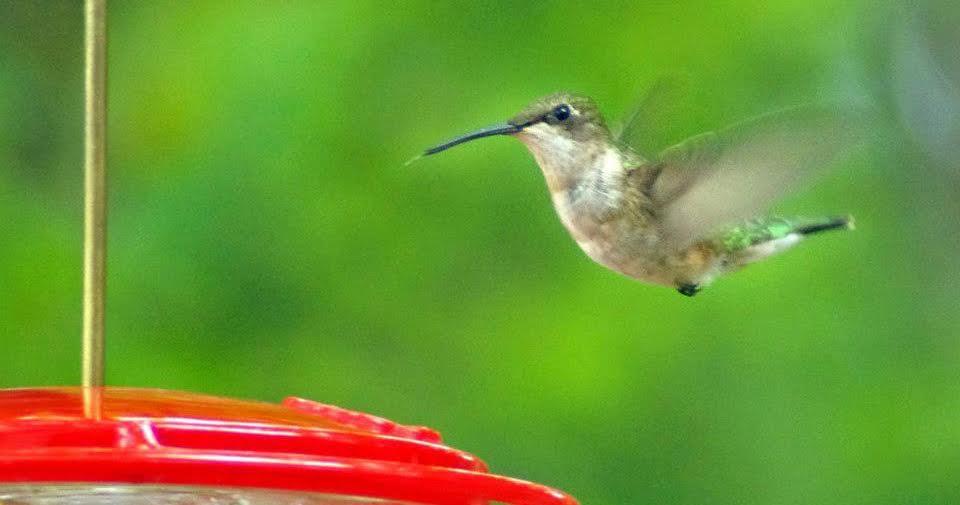
by Ilse Gebhard, KAWO member
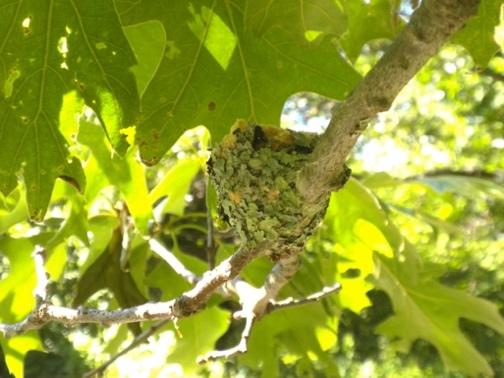
Some years ago, I had quite a day in early May. First a female Ruby-throated Hummingbird (Archilochus colubris) landed briefly on the feeder on our deck and even came back later in the afternoon. Good sign that she might stay close-by for the summer. I will have to watch closely in which direction she flies off after filling up on nectar. The previous year, after hours of watching a female’s movements, I found her well-camouflaged nest.
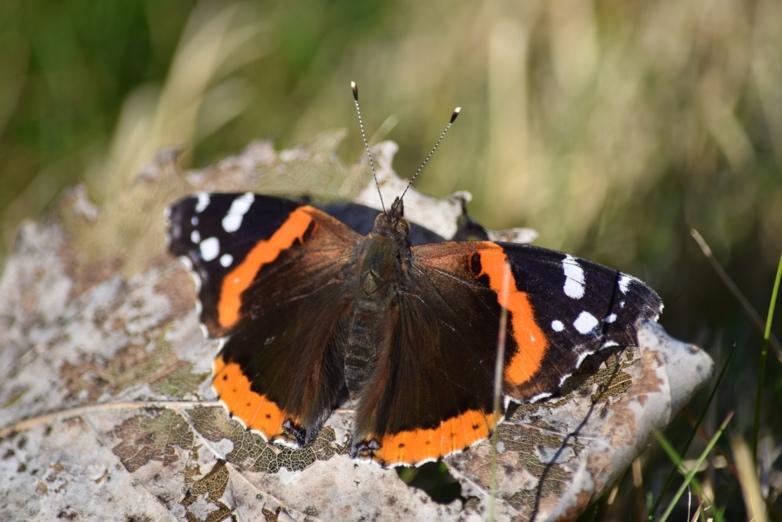
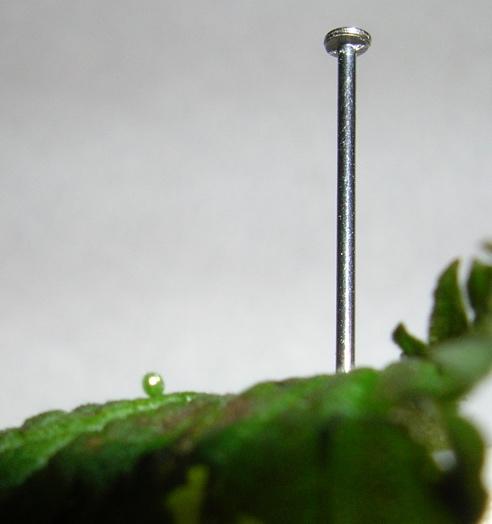
I then went out to look for Red Admiral (Vanessa atalanta) caterpillars on Tall Nettle (Urtica procera) growing in the backyard. The butterflies had been around in good numbers for more than a week. No caterpillars found, but what I thought was my very first Red Admiral egg. Brought it inside to raise to confirm my hunch.
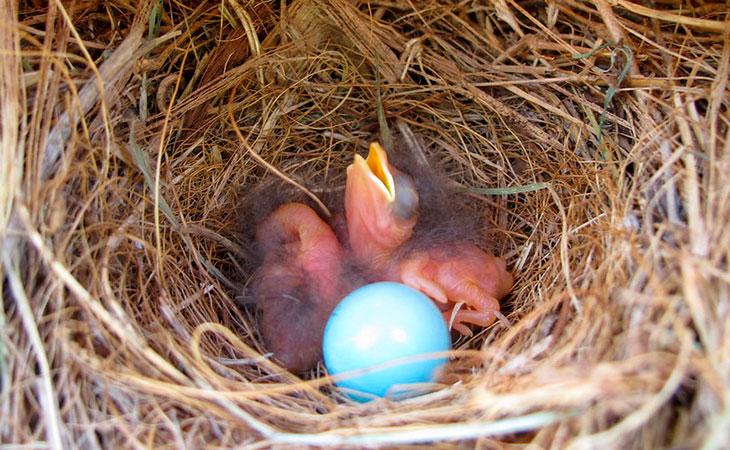
Next, I was off to check nesting boxes in the field across the creek that bordered our backyard. One box of Eastern Bluebirds (Sialia sialis) had fledged the young and I removed the old nest to encourage a 2nd nesting. As I approached another box, I heard a lot of chirping, indicating young close to fledging. From my records the previous week I knew they were bluebirds, so no need to open the box and possibly cause premature fledging. A third box contained an egg and just hatched nestlings in the deep cup of a 4-inch-tall grass nest. At that stage it is hard to tell the species of the nestlings but the egg was that of a bluebird.
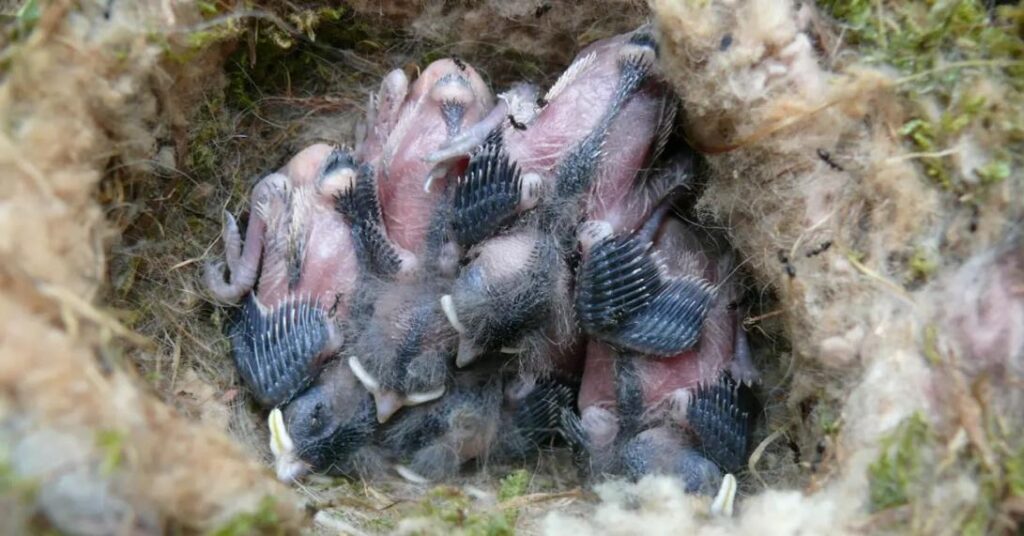
In the box closest to the tree line at the far end of the field I expected to see Black-capped Chickadees (Poecile atricappilla). The previous week there had been seven eggs in a nest made from moss and plant down and sure enough all seven had hatched. That size brood would keep the parents very busy feeding them for the next couple of weeks.
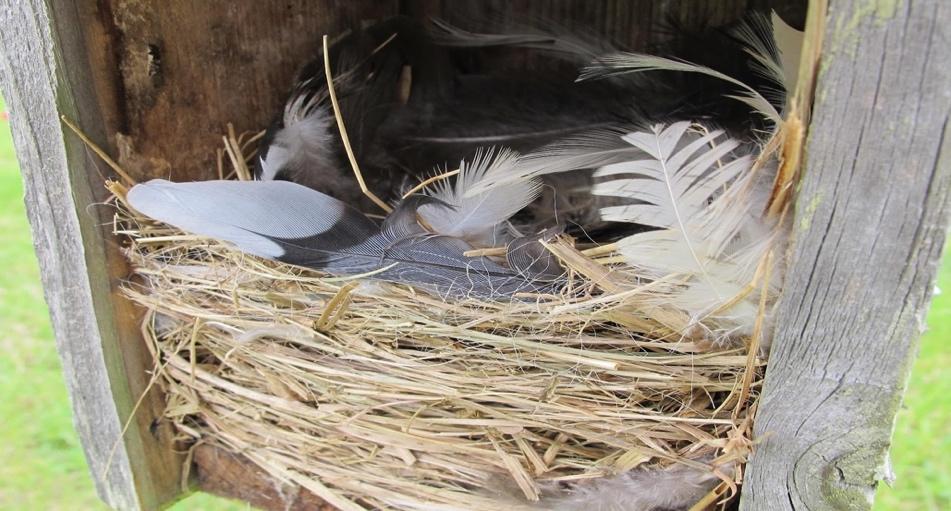
Four of the boxes had Tree Swallow (Tachycineta bicolor) nests, but no eggs yet. Tree Swallows, like the bluebirds, make grass nests, but the nests are usually not as tall and are typically topped with one or more mostly white feathers. They tend to start nesting a little later than the bluebirds and chickadees. Bluebirds snatch insects from the ground and the air, while chickadees glean insects from branches, trunks, and leaves. Tree Swallows only take insects on the wing in continuous aerial feeding and therefore depend on warmer weather when flying insects take to the air.
Two of the boxes were empty, but eight out of ten is a very good occupancy rate. I was so relieved that all the young had survived the several days of cool weather and the previous two nights of below freezing temperatures. And no House Sparrow (Passer domesticus) nests!!!!!
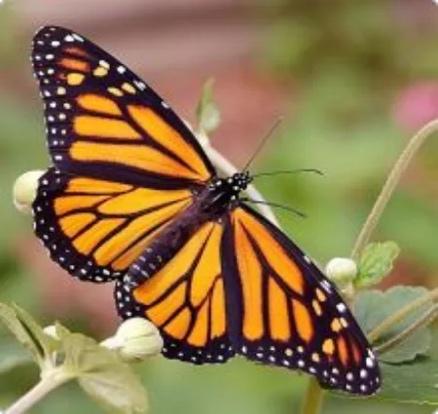
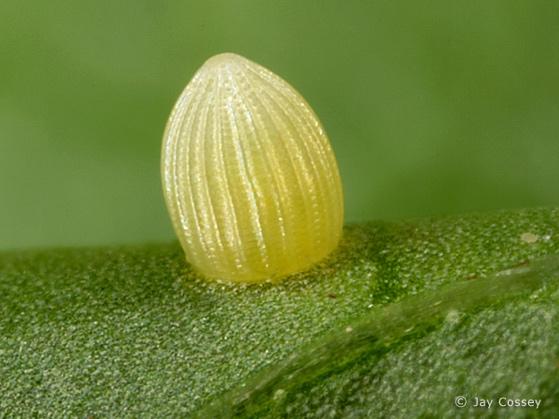
My box monitoring was interrupted for a good half hour by a large, dark orange butterfly flying low over the field. My heart went pitter-patter! Could it be a female Monarch (Danaus plexippus)? I had forgotten to take my binoculars but I was able to follow her as she stopped off at numerous 1-3 inches tall milkweed plants which showed damage from the two nights of frost. Nonetheless, she did lay eggs on the frost damaged plants. I found five and collected them to raise inside the house, safe from further predicted frost. This find was very fortuitous as I had a Monarch talk scheduled for the evening and I now had actual eggs to show.
Cover photo courtesy of Cool Springs Press.
